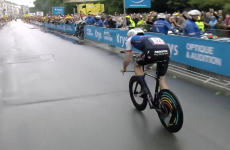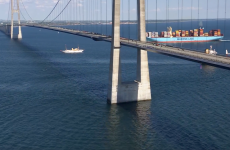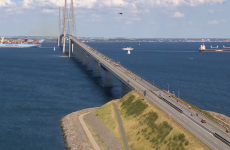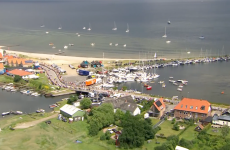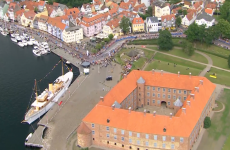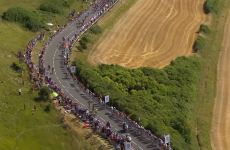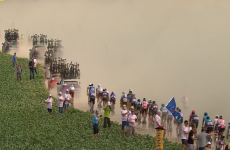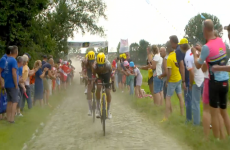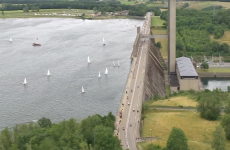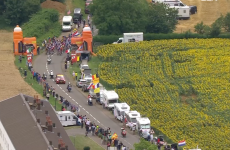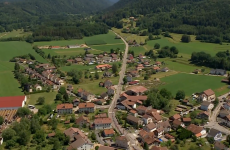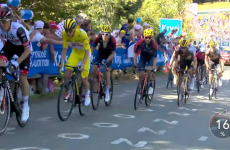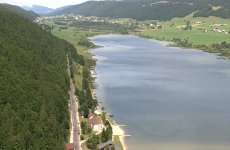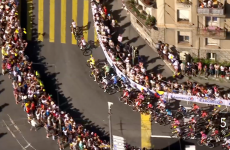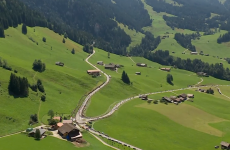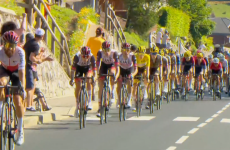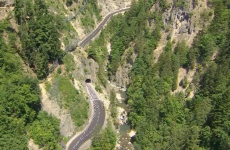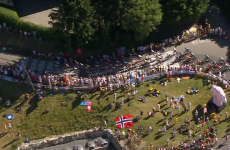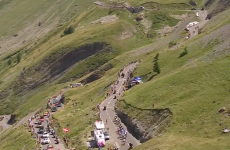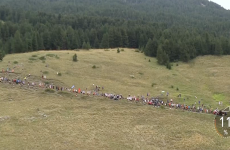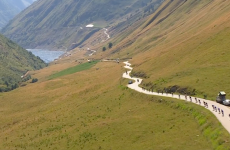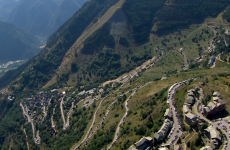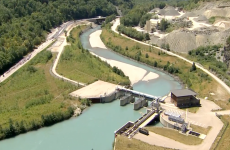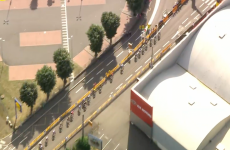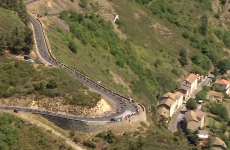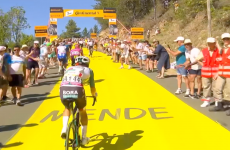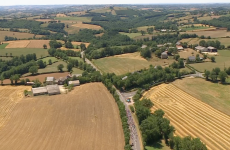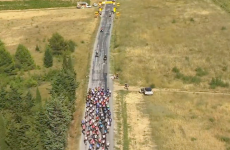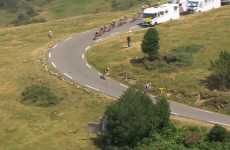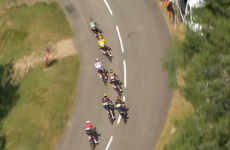Description
July 5, 2022
Tour de France 2022 – Stage 4 – Dunkerque – Calais : 171,5 km
For three weeks of the year cycling fans put their bikes away and root themselves to their sofas,
Show more...
July 5, 2022
Tour de France 2022 – Stage 4 – Dunkerque – Calais : 171,5 km
For three weeks of the year cycling fans put their bikes away and root themselves to their sofas, eyes fixed on their television screens as they watch one of the greatest races of the season play out in front of them. We are, of course, talking about the Tour de France – the one bicycle race that nearly everyone on planet Earth has heard of. This three-week race is regarded by many as one of the toughest sporting events in the world. With 21 gruelling stages to complete over a 23-day period, adding up to around 3,500km in total, the Tour de France is a race of pure endurance. The winner isn’t necessarily the strongest rider, but rather the one who can survive the most suffering, day after day. Five-time winner of the Tour, Bernard Hinault, summed up just what it takes to win this great race: “You can’t win without suffering. Whether it’s in the mountains or in a time-trial, you have to spare no effort. You may feel drained at the finish, but the joy of winning helps you forget everything.” The 2022 route, which is due to start in Copenhagen, Denmark, and finish in Paris, France, is headlined by six summit finishes, two individual time trials and a high-mountain stage that will see the riders grovel their way to the the 2,413m-high summit of the Col du Granon. The rest of the route features hilly stages aplenty, but only a couple of flat stages for the fastmen. In place of sprinting opportunities this year, the organisers have opted for dynamic stages that will suit a wide array of riders and promote aggressive and entertaining racing.
Wout van Aert (Jumbo-Visma) broke his sequence of near misses on the Tour de France in emphatic fashion when he soloed to victory on stage 4 in Calais after a searing acceleration on the Côte du Cap Blanc-Nez.
When Jumbo-Visma massed on the front of the peloton with 10km remaining, they seemed intent on replicating their startling collective show of force on the opening day of Paris-Nice, but this time it was Van Aert’s remarkable individual strength that carried the day.
After Tiesj Benoot had swung off, Van Aert followed through with a rasping acceleration that liberally sprinkled the peloton across the hillside. Only his teammate Jonas Vingegaard and a very alert Adam Yates (Ineos) could initially follow, but they, too, had to relent before the summit.
The yellow jersey very briefly considered waiting for reinforcements, but he didn’t hesitate long and quickly stretched his lead out towards 25 seconds over the other side. From there, it was a procession of the striking kind conjured up by Julian Alaphilippe on the road to Epernay three years ago.
While Van Aert cruised serenely towards Calais, the general classification men initially caught out on the final climb, including Tadej Pogačar (UAE Team Emirates), were scrambling to take their places in a reduced chasing group.
“I was too far behind to follow so I tried to go as fast as possible to the top to see what was the situation,” Pogačar said. “It was OK, Van Aert dropped even his teammates, and when I saw that, I was more calm and I didn’t stress.”
The chasers would close the gap to eight seconds by the finish, though only because Van Aert took time to freewheel across the line and savour his victory, which came after three successive second-place finishes.
Jasper Philipsen (Alpecin-Deceuninck) beat Christophe Laporte (Jumbo-Visma) in the sprint for second place, though he celebrated vigorously in the mistaken belief that he had won. It was, on reflection, an easy mistake to make. Van Aert, after all, looked to be in a race of his own.
“I think it was quite obvious we were trying something with the team,” said Van Aert, who missed the Belgian Championships with a knee injury a week before the Tour got underway.
“Then Nathan [Van Hooydonck] opened up on the climb and Tiesj took over. I felt in the wheel already it was really hard, and then on the radio we heard there was some damage.”
That was something of an understatement. Even Van Aert’s team leader Primož Roglič was unable to keep pace with the initial part of the onslaught, while riders of the calibre of Pogačar, Daniel Martínez and Geraint Thomas (Ineos) were grappling to get back on terms.
“The goal was to go full to the top and see what happened, but then I came over the top alone and I was a bit in doubt if I should wait for Jonas and I think Yates, the two guys behind me,” Van Aert said. “But by going full, I also put Jonas and the others in a good position where they didn’t have to ride. So I decided to go alone and then it was 10k of all-out suffering.”
In overall standings, Van Aert extended his lead over Yves Lampert (QuickStep-AlphaVinyl) to 25 seconds, while Pogačar remains third at 32 seconds. Mathieu van der Poel (Alpecin-Deceuninck), who has designs on contesting yellow against his eternal rival on the cobbles on Wednesday, now has 38 seconds to recoup.
How it unfolded
This was the first Tour de France stage on French roads in 2022, but thoughts remained firmly in Denmark at the start in Dunkirk, where a minute of applause was observed to remember the victims of a mass shooting in Copenhagen on Sunday afternoon. The Danish riders lined out at the head of the peloton for the commemoration, and one of their number was soon off the front of the race.
Magnus Cort (EF Education First-EasyPost) is wearing the king of the mountains jersey thanks to his successful raids on the first road stages in Denmark, and he was on the offensive again here, slipping away in the opening kilometres in the company of Anthony Perez (Cofidis). The duo quickly established a firm advantage, and their buffer would build steadily for the first two hours of racing, reaching a maximum of 7:30 with 90km to go.
By then, Cort had further tightened his grip on the polka dot jersey by leading over the cobbled Côte de Cassel and the Côte de Remilly-Wirquin. Back in the peloton, meanwhile, the early détente was broken after the Cassel, when the race briefly split thanks to the probing of QuickStep-AlphaVinyl and TotalEnergies. Although the crosswind was not strong enough to form lasting echelons, it was a gentle reminder that cobblestones are far from the only running hazard in this corner of the world.
The escapees still had 3:30 in hand by the time they hit the category 4 Côte de Nielles-lès-Bléquin and Côte de Harlettes with 70km to go, where Cort, inevitably, led over the top. Cort, as per the tacit accord, also led the escapees over the day’s penultimate climb of the Côte du Ventus with 47km to go, before allowing Perez to attack alone shortly afterwards. This stage was taking place in the background of sponsor Cofidis and he, too, needed something to show for his day off the front.
The peloton, however, had closed to within 1:20 of Perez thanks largely to Alpecin-Deceuninck and Trek-Segafedo, and his lone effort was doomed from the outset. He lasted almost to the base of the day’s final climb, where Ineos sensed the imminent danger and positioned their GC men at the front just before Jumbo-Visma took over.
“They did the same thing at Paris-Nice and we had the suspicion they might do the same thing here. I sprinted full gas bottom to the top, but I just ran out of legs over the top,” said Yates, who spoke for many of the overall contenders when asked to cast his mind forward to Wednesday’s trek across the cobbles. “No,” he smiled. “I’m not looking forward to it.”
Pogačar struck a similar note. “Tomorrow I need to survive,” he said. “It will be a big war.”
Results :

![Tour de France 2022 - Stage 04 [FULL STAGE]](/wp-content/uploads/2022/07/Tour-de-France-2022-Stage-04-FULL-STAGE.png)









